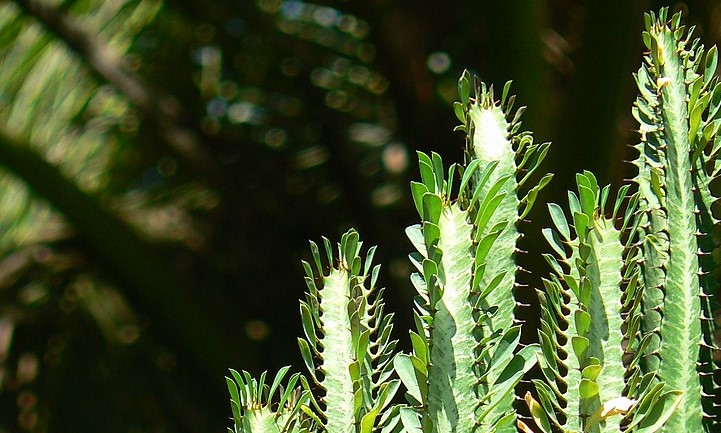Kenya is a popular place for safari holidays. Of course, most people go to see the amazing wildlife the savannah has to offer, but have you considered the other type of life on land – the plants?
Check out these three amazing plants found in Kenya!
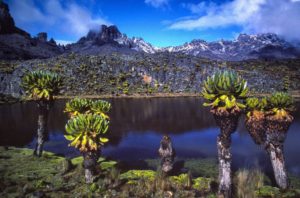
Giant Groundsel
You will find these giant rosette plants towering over alpine shrubs and grasses in higher elevations, such as Mt Kenya and the Cherangani Hills, and can live some 250 years. One of the grandest varieties (Dendrosenecio keniodendron) actually grows on Mt Kenya. Its woody stems can reach 26 feet tall, with branches capped with large-leaf evergreen rosettes nearly 9 inches wide. To protect itself from the cold, the leaves will close during the night and open again in the morning.[1] Yellow flowers form on tall flower stalks sent up from the rosettes and also produce a new branch. These flower stalks only form rarely and at irregular intervals, but interestingly they form at the same time all over the mountain.[2]
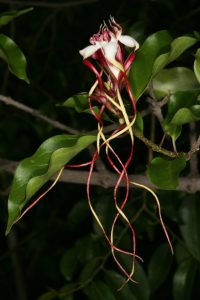
Sand Forest Poison Rope
This climbing shrub can grow up to 50 feet long in the dappled shade of forest margins throughout southeastern Africa. Deciduous, with large, leathery leaves oval in shape. From September to December the shrub is decorated with fragrant, creamy flowers, sometimes striped pink, with standing frills. Most unique, however, are the petals which end in long, curling tails that dangle past the leaves. As its name suggests, this plant can be poisonous – the Zulu famously used the seeds to make a poison for their arrows, while the fruit was often used to poison spears.[3] That being said, the roasted, powdered seeds are used on humans and cattle as a cure for snakebites and though in smaller doses it is also used medicinally for heart conditions.[4]
African Milk Tree
The African Milk Tree is also sometimes called a cathedral cactus, but it is neither a tree nor a cactus. It is, in fact, a succulent that looks much like a cactus – it even has thorns – with teardrop-shaped leaves. Native to Central Africa, it grows in clusters of upright branches and can reach 9 feet tall. While green in general, there is a red variety known as “Royal Red,” whose leaves are vibrant red or maroon.
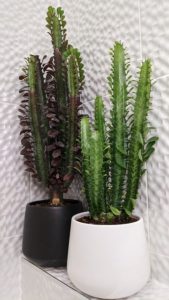
While the name suggests finding them while thirsty in the hot African savannah would be a happy chance – a third name is lucky cactus, after all – the white, sticky sap is, in fact, toxic and causes severe skin irritation.[5] That being said, it is not terribly difficult to find these plants as house plants![6]
Of course, there are many, many other iconic vegetation in Kenya – such as baobab trees that can grow 90 feet tall! Local tribes often use them as gathering sites and besides eating their nutritious fruits, their leaves are used in traditional medicine for ailments such as malaria, fever, and diarrhea.[7] Another sometimes found as a houseplant, Mpaga is a thorn-covered bush whose thorn-covered branches grow from a central caudex and can reach 26 feet
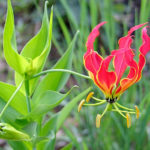
in the wild. The flame lily is another striking sight found in most Kenyan habitats. It even grows in the poor nutrients of sand dunes and mountain cliffs. While its brightly colored, curling petals do indeed resemble flames it is highly poisonous, so it’s best to take only pictures when you do see one.
If you choose a Kenyan safari vacation, remember to look out for these fantastic plants and more!
[1] https://link.springer.com/article/10.1007/BF00985353
[2] https://web.archive.org/web/20100610221104/http://tpyoung.ucdavis.edu/publications/1982CostReprodOecol.pdf
[3] https://pza.sanbi.org/strophanthus-speciosus
[4] https://seedsandall.co.za/product/sand-forest-poison-rope-strophanthus-petersianus-3-seed-pack/
[5] https://www.thespruce.com/african-milk-tree-profile-4846360
[6] https://planetdesert.com/products/african-milk-tree-euphorbia-trigona-rubra
[7] https://www.discoverafrica.com/blog/5-of-the-most-unique-plants-in-kenya/
